Immerse yourself in Barcelona's vibrant flavors and uncover hidden culinary gems with our expert insider guides. Plan an unforgettable trip today!
Read more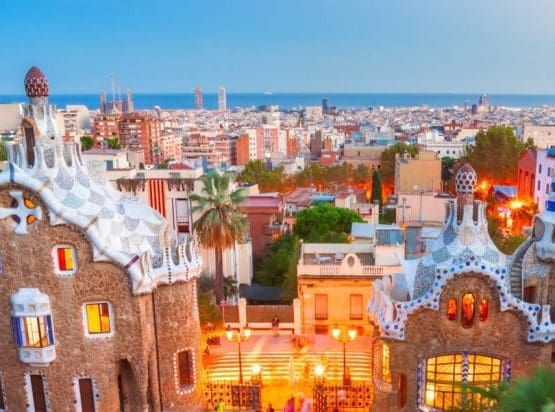
EXPLORE ALL OUR CATALUNYA WINE REGIONS GUIDE
Last updated: October 11, 2024
Immediately to the west of the great Catalan wine region of Penedès are the vineyards of Tarragona, which houses the dynamic subregion of Montsant. Twenty years ago, Montsant was little more than an unremarkable collection of vineyards producing rustic and fiercely alcoholic plonk. Then, the magicians from Priorat arrived: Joan d’Anguera, René Barbier, and Christopher Cannan. They have transformed Montsant’s reputation, crafting very concentrated dry reds that don’t sacrifice freshness at the altar of ripe fruit. Indeed, the region is making a name for itself as a great-value competitor to the mighty Priorat region. The top cuvées inevitably include a good percentage of old-vine Garnacha, the DO’s star grape. Today they rival top-flight Penedès wines in blind tastings and are considerably better value than the admittedly excellent wines of the Priorat area. Monstant has become the wise choice.
Discover more about Spanish Wine
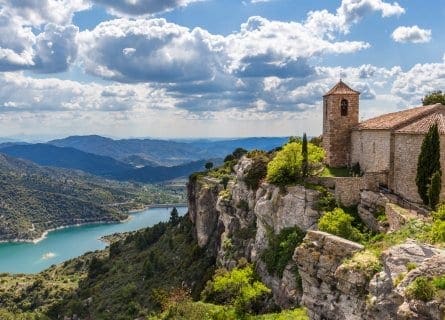
Montsant is one of Spain’s newest DOs (appellations), recognized officially in 2001. However, vines have been cultivated in this part of southern Catalunya since Roman times; the Roman historian Pliny praised the wines of this wonderful region, calling them “some of the best in the Empire.” At the height of their renown, vintages were shipped to the Roman capital, Rome. Sadly, wine production stopped in Catalunya after the Western Roman Empire fell in 476.
The invading Gothic and Vandal tribes from the North and the Moors from North Africa saw this, too! They established a power base in southern and central Spain that endured for centuries, building a sophisticated civilization called Al Andalus. The Moors controlled Catalunya briefly; the Franks from neighboring Roussillon fought a hard campaign against Tariq’s forces and retook Barcelona in 801. Power then shifted to the Casal de Barcelona, a group of noble families who also exercised dominion over territories in southern France.
Monks who had relocated from the Burgundy region and the Rhine in Germany reintroduced vines, and the Tarragona region started producing wine again in the Middle Ages. They arrived, bringing their unique wine knowledge to Catalunya, and a thriving industry once again prospered. Trade with the Americas in the 1700s also brought great prosperity to the Catalan wine trade.
However, the arrival of the Phylloxera louse in the late 1800s devastated many of the area’s vineyards. Thankfully, a solution was found in the early 1900s: European vines had to be regrafted onto American rootstock, as the latter had developed a resistance to the pest.
Nevertheless, Montsant existed in Tarragona’s shadow for much of the 20th century. Meanwhile, the dictator Francisco Franco crushed Catalunya’s dreams of becoming a sovereign nation after seizing power in 1939. Franco wanted a unified state and was unprepared to tolerate dissent from partisan regions like the Basque Country and Catalunya.
As a result, all local parliaments, like Catalunya’s Generalitat, were shut down, and regional language use was severely restricted. However, autonomy and dignity were restored to the citizens of Catalunya following Franco’s death in the 1970s.
Modern Revival and Growing International Recognition
But on a more local level, Montsant started to gain international recognition in the 21st century. In 2001, local growers successfully petitioned to have their subregion legally recognized as an independent DO; it had previously been known as the Falset subzone of the Tarragona appellation.
Encouraged by their award of independent status, producers in the new Montsant zone started increasing their vineyard plantings and actively promoting their delicious wines. They have not looked back since, encouraging Priorat trailblazers like René Barbier to try the soils of Montsant.
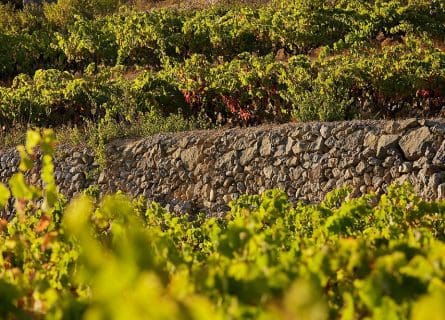
Montsant is located in one of southern Catalunya’s most scenic regions. The vineyards surround its more famous cousin, Priorat, flanked by that appellation’s celebrated slate hills. And, like Priorat, there is plenty of heat and sunshine in this part of Spain. Climatically, the area enjoys a relatively benign Mediterranean climate with continental influences. As a result, the summer growing season tends to be dry at harvest time, with a risk of rainfall. Frost damage is also quite rare, another contributing factor to the generally healthy yields enjoyed by growers in the region.
Benefits of High-Elevation
Yet the intense summer heat presents challenges: excessive alcohol can be an issue in the lower-elevation sites. Fortunately, the local topography is very diverse, and vineyards grow along the mountainsides and on the slopes among olive trees and spectacular forests. Some climats (vineyard sites) rise to 700 meters above sea level, benefiting from diurnal temperature variation.
This is a winegrower’s best friend: a significant temperature difference between day and night. As a result, the vine’s metabolism slows down in the evening, preserving acidity and freshness in the wines. This is also an important quality factor in neighboring Priorat.
However, despite Montsant’s proximity to its smaller rival, the terroir is quite different, reflected in the wine style. Montsant’s vineyards tend to be planted on granite and sandy soils, giving generous grape yields in the right conditions. In contrast, Priorat is famous for its unique, porous, and slate-like soils – llicorella in Catalan – naturally infertile, giving low yields and extremely concentrated wines. Therefore, judicious canopy management is crucial in Montsant if the winemaker desires quality. Many agree that Falset is the greatest wine village in Montsant – the gateway to Priorat.
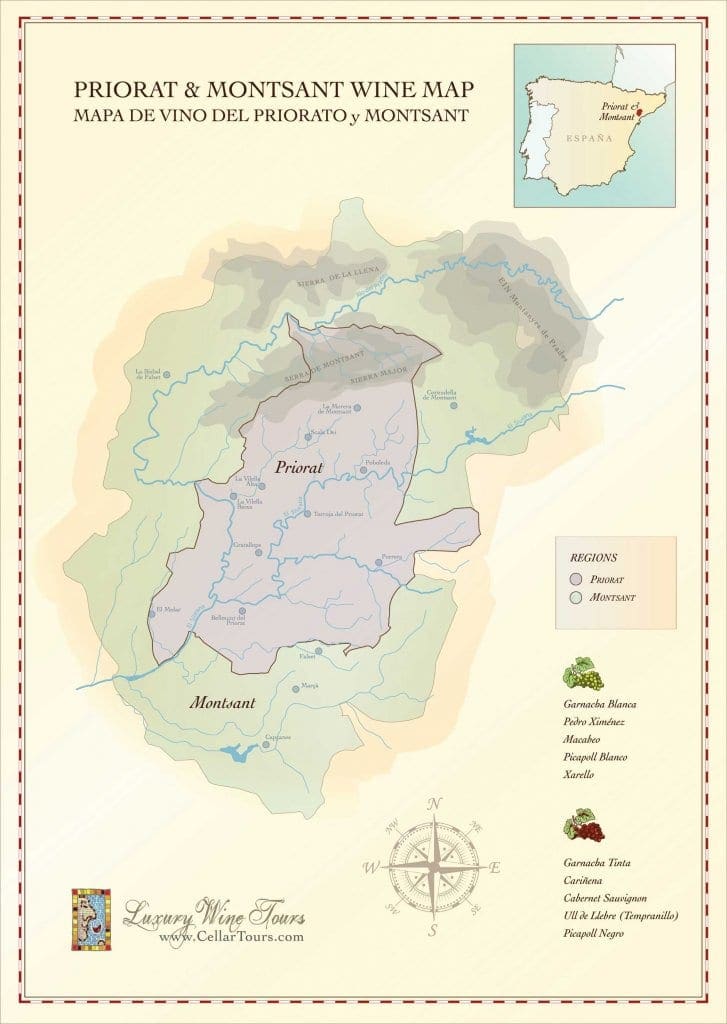
Comparisons between Priorat and Monstant are unavoidable – and inevitable. Still, many of the latter region’s bodegas are run by supremely talented winemakers and technical directors. Glistening with shiny new equipment, these wineries adopt a sophisticated approach to vinifying and aging their wines. Only the finest fruit is fermented in various vessels, including concrete eggs, stainless steel, and oak. Maturation in wood is a crucial part of the winemaking process in Montsant, particularly for Garnacha/Syrah blends, often enriched with a dash of Carignan.
Differences in Terroir and Style Compared to Priorat
But, there is no getting away from the divergence in terroir; there is no llicorella in Monstant, the single most important factor in Priorat’s quality equation. Thus, the red wines of the DO can be (and often are) excellent but also tend to be less powerful, concentrated, and mineral-driven than those of their famous neighbor. Nonetheless, they are delicious and lovely to drink in their own right.
Like Priorat, the reds tend to be blends of the widely planted Cabernet Sauvignon, Mazuelo (Carignan), Garnacha, Syrah, and Tempranillo or Ull de Llebre in Catalan. These wines are typically medium-bodied, with a supple black fruit character and softer tannins than those of Priorat. You can usually enjoy many labels upon release, as they don’t tend to age for long periods due to lacking the structure of top red Priorat. However, they are considerably better value! Also, interestingly, this region produces some of Spain’s best Kosher Wines.
There is also a small amount of white production in Montsant, but it is the reds for which the region is making a formidable name. Whites are Chardonnay, Garnacha Blanca, Macabeo, Moscatel, Pansal, and Parellada blends. Single-varietal examples are rare, as winemakers feel blends tend to give the best expression of the Montsant terroir. Producers in the region also make a few rosés, dessert, and rancio fortified wines using the sherry solera system, although their numbers are dwindling.
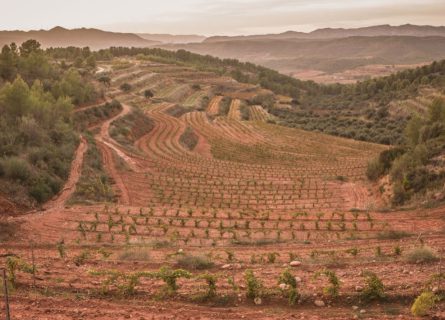
In the 20th century, Montsant was tarred with the “poor man’s Priorat” brush—or worse. This was more than just good old-fashioned prejudice; rustic equipment allied to lazy viticulture greatly damaged the region’s reputation, forestalling its entry into the premium wine market.
However, the arrival of Priorat legends René Barbier and Christopher Canaan was a welcome development over the past few years, as they have brought their invaluable expertise to the fledgling wineries of this picturesque region. This and the top bodegas’ ever-rising standards mean that the wines of Montsant are finally making their mark with the world’s wine connoisseurs.
Development as a Nascent Wine Region
Yet when assessing the wines of Montsant, it is essential to remember that this is a DO still very much in its nascent stages of development. Of course, what has been achieved quickly is remarkable, and the region now offers top-quality reds to rival the more expensive competition from other parts of Spain. Nevertheless, the critical mass are well-made, fruity, and approachable reds that seldom break the bank. If you seek dramatic heft at an affordable price, you will not find a better place to start looking in Spain than in the vineyards of Montsant.
But we know that Montsant is capable of more. Encouragingly, its generous volume of old Garnacha bush vines now has some staunch advocates behind them, producing complex and elegant expressions of this underrated grape. Celler de Capcanes leads the way, closely followed by the Espectacle vineyard owned by Barbier and Cannan. This is a world-class Garnacha that can slay lesser Priorat in blind tastings. We need more of it.
Chardonnay is a green-skinned grape varietal native to the Burgundy wine region in France and one of the most popular varieties worldwide.
Find out moreDiscover Viura: Rioja's Prominent White Grape & Catalonia's Macabeo. Explore its versatility in exquisite wines. A must-read for wine enthusiasts.
Find out moreDiscover the Allure of Grenache Blanc: Full-Bodied White Wine from Northeastern Spain. Experience the Richness of High Alcohol, Low Acidity Wines.
Find out morePansal grape, also called Garnacha Peluda or Hairy Grenache, is an indigenous variety in Montsant, Spain. It features unique hairy leaves and thrives in the region's warm Mediterranean climate. Pansal wines are known for their vibrant red fruit flavors, moderate acidity, and smooth texture. This distinctive grape adds to Montsant's authentic winemaking heritage, making Pansal wines sought after by those seeking something different.
Unveil the allure of Parellada grape: a Spanish gem crafting elegant sparkling & white wines. Explore its unique qualities & flavor profile.
Find out moreDiscover the irresistible allure of Cabernet Sauvignon—a worldwide favorite with robust, dark-bodied flavor. Unleash your wine journey today!
Find out moreCarignan is a red grape variety that grows mostly in Southern France, and is often used as a blending grape
Find out moreGarnacha: Spain's Red Gem. Akin to Pinot Noir, it bridges terroir and winemaking, crafting captivating expressions.
Find out moreMerlot is the most cultivated grape in Bordeaux and closely related to Cabernet Franc
Find out moreSyrah is dark-skinned and perhaps the most underrated of the 'noble' red grape varieties.
Find out moreDiscover Tempranillo: Spain's iconic red grape. From Ribera del Duero to Toro, it yields concentrated wines. Explore its synonyms and unleash its prowess.
Find out moreCatalunya is packed with good places to eat. Visitors to Montsant should head over to Tarragona for a surfeit of cervezerias (beer bars), tabernas, marisquerias (seafood restaurants), and comedores (sit-down restaurants). Inside you’ll encounter a staggering variety of delicious tapas, raciones, and every type of fresh shellfish and seafood imaginable. Almost a religion in parts of Catalunya, snails are often stewed with rabbit and chili. It’s delicious, believe it or not!
Guide to Catalan Gastronomy: Read more

Immerse yourself in Barcelona's vibrant flavors and uncover hidden culinary gems with our expert insider guides. Plan an unforgettable trip today!
Read more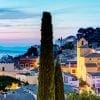
Immerse yourself in Begur's vibrant flavors and uncover hidden culinary gems with our expert insider guides. Plan an unforgettable trip today!
Read more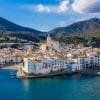
Immerse yourself in Cadaquès's vibrant flavors and uncover hidden culinary gems with our expert insider guides. Plan an unforgettable trip today!
Read more
Immerse yourself in Sitges's vibrant flavors and uncover hidden culinary gems with our expert insider guides. Plan an unforgettable trip today!
Read moreIf you would like us to customize an exclusive luxury tour, contact us and let us know your travel plans. We offer luxury food and wine tours for private groups of a minimum two guests. In addition, all of our private, chauffeured tours are available year-round upon request.

